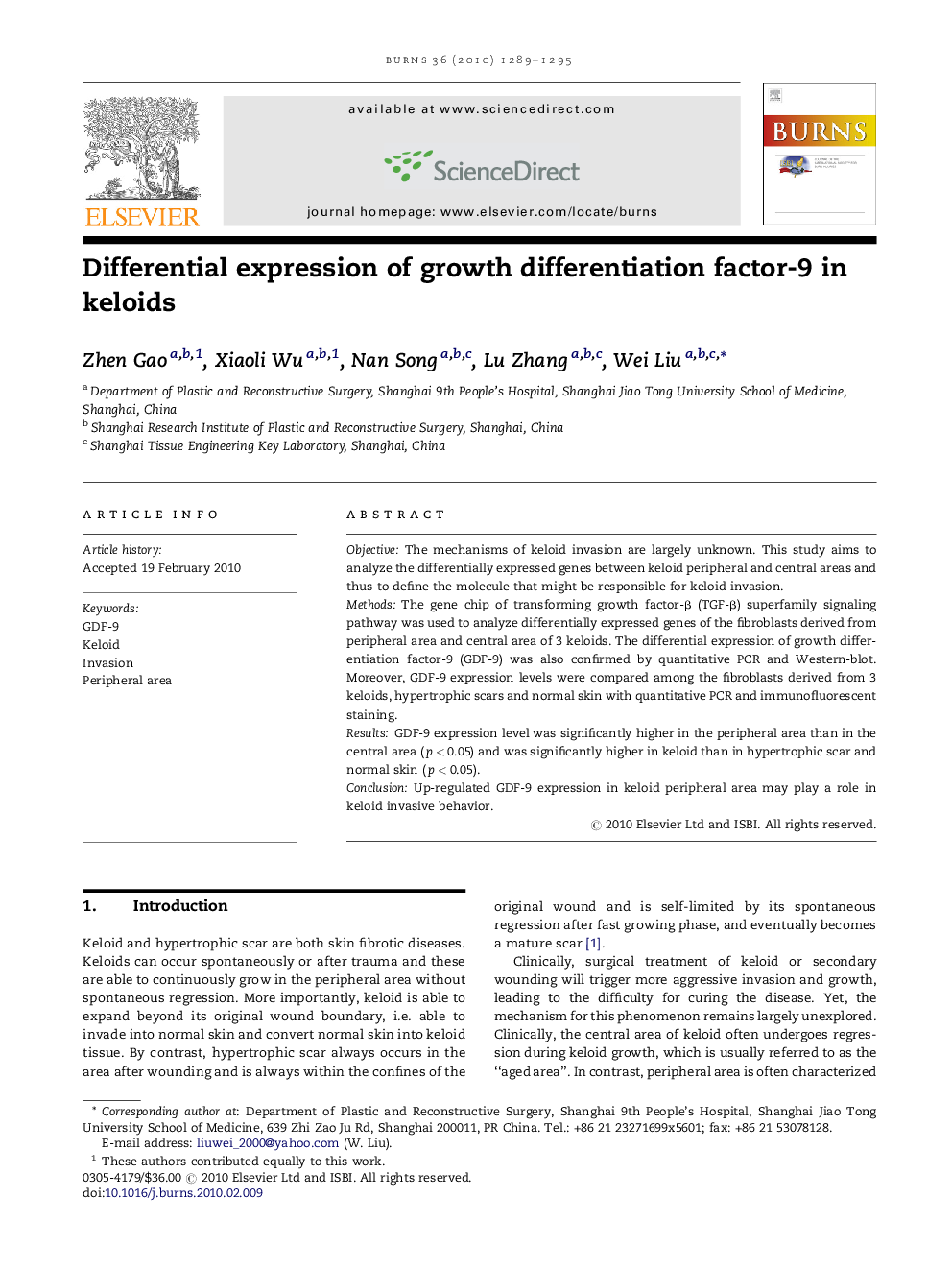| Article ID | Journal | Published Year | Pages | File Type |
|---|---|---|---|---|
| 3106274 | Burns | 2010 | 7 Pages |
ObjectiveThe mechanisms of keloid invasion are largely unknown. This study aims to analyze the differentially expressed genes between keloid peripheral and central areas and thus to define the molecule that might be responsible for keloid invasion.MethodsThe gene chip of transforming growth factor-β (TGF-β) superfamily signaling pathway was used to analyze differentially expressed genes of the fibroblasts derived from peripheral area and central area of 3 keloids. The differential expression of growth differentiation factor-9 (GDF-9) was also confirmed by quantitative PCR and Western-blot. Moreover, GDF-9 expression levels were compared among the fibroblasts derived from 3 keloids, hypertrophic scars and normal skin with quantitative PCR and immunofluorescent staining.ResultsGDF-9 expression level was significantly higher in the peripheral area than in the central area (p < 0.05) and was significantly higher in keloid than in hypertrophic scar and normal skin (p < 0.05).ConclusionUp-regulated GDF-9 expression in keloid peripheral area may play a role in keloid invasive behavior.
